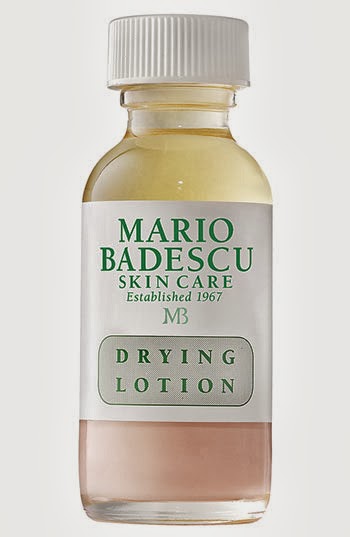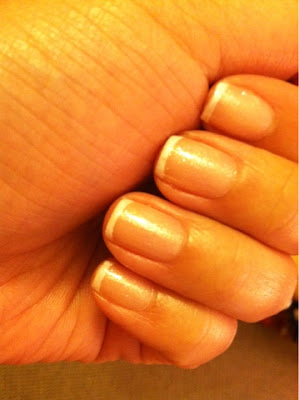If you haven't heard, BB's have been the latest buzz in beauty within the past few years. Although they've been around in Asia for a while, they made it over to the Western world around 2 years ago. Companies ranging from Palmer's to Chanel have branched out to make these facial products. Overall, they offer a few more benefits than tinted moisturizers do. Like tinted moisturizers, BB's and CC's are hydrating and may provide SPF protection. How are they different? First, BB's and CC's provide a slightly heavier coverage than a tinted moisturizer, which offers a sheerer coverage. They also combine multiple skincare products - moisturizer (hydrates), primer (protects and smoothes), serum (repairs and protects, foundation (blurs imperfections and evens skin tone) - into one, easy step.
The amount of coverage as well as the finish (dewy, matte, natural, satin, etc.) will vary based on a brand and/or product. In addition, both the number and types of skin benefits such as anti-oxidant protection or radiance boosting, which you would get from a serum, will vary by brand and/or product. For example, the REN Satin Perfection BB Cream Sunscreen ($38 at Sephora) has photo-rejuvenation technology to diminish the look of fine lines, while the Dr. Brandt CC Glow Broad Spectrum SPF 30 ($39 at Sephora) has brightening ruby crystal complex and vitamin C.
Then, how are BB's different than CC's? Essentially, BB or beauty/blemish balm, and CC or complexion correcting creams are very similar. The only differences are, compared to BB's, the focus of CC's are on color correction for issues like redness or dark spots, meaning that they often have slightly heavier coverage, a lighter feel, and contain more vitamin C than BB's. On the other hand, BB's have a little bit of a lighter coverage and generally have the advantage when it comes to antioxidants and age-slowing ingredients.
Here are some of my recommendations broken out by skin type. Just FYI all of these products are toxin-free and are formulated with physical sunblocks.
Unfortunately, there aren't a ton of healthy BB's and CC's on drugstore shelves currently. The ones that I do really like are the Physicians Formula Super BB All-In-1 Beauty Balm Cream SPF 30 ($15 at Ulta) and the oil-free Maybelline Dream Fresh BB 8-In-1 Beauty Balm Skin Perfector SPF 30 ($9 at Ulta). For a CC cream, try the Yes to Grapefruit Correct & Repair CC Cream SPF 18 ($16 at Ulta).
Recently, some new types of CC products have launched on the market:
I think that BB/CC creams are a must-have for every girl. Why? Well, moisturizers with SPF are a must in the mornings. For those of you, who use foundation on top, a CC will combine the moisture and coverage steps into one. For those of you, who don't wear facial makeup, replace your regular moisturizer with a BB. Just make sure that like with all sun protective creams, you apply an adequate amount. BB/CC's are often healthier for your skin (allow it to breathe and offer protective benefits) and easier to apply (no brush or sponge necessary). Plus, a hint of color never hurts!
Personally, I opt for a BB for daily wear and foundation for special occasions because even though BB's offer good coverage, I find that they still don't cover as well as a traditional foundation. And hey! I don't forget about tinted moisturizers. They're great for layering under foundation or as a light-weight moisturizers with sheer coverage on a hot day.
In the end, by merging the worlds of skincare and makeup together, BB/CC's are a part of the recent growing trend of makeup that's good for your skin. And watch out! DD's, which stands for dynamic do-all, are coming next with even more benefits in 1 tube. By combining the anti-oxidant power of BB's and the color correction of CC's and adding even more powerful anti-aging technologies, they bring you the best of both worlds. Brands like Dermadoctor ($38 at Sephora) and Pur Minerals ($35 at Ulta) already produce a DD cremes.
Are you a BB, CC, or DD kind of gal?
Then, how are BB's different than CC's? Essentially, BB or beauty/blemish balm, and CC or complexion correcting creams are very similar. The only differences are, compared to BB's, the focus of CC's are on color correction for issues like redness or dark spots, meaning that they often have slightly heavier coverage, a lighter feel, and contain more vitamin C than BB's. On the other hand, BB's have a little bit of a lighter coverage and generally have the advantage when it comes to antioxidants and age-slowing ingredients.
Here are some of my recommendations broken out by skin type. Just FYI all of these products are toxin-free and are formulated with physical sunblocks.
Unfortunately, there aren't a ton of healthy BB's and CC's on drugstore shelves currently. The ones that I do really like are the Physicians Formula Super BB All-In-1 Beauty Balm Cream SPF 30 ($15 at Ulta) and the oil-free Maybelline Dream Fresh BB 8-In-1 Beauty Balm Skin Perfector SPF 30 ($9 at Ulta). For a CC cream, try the Yes to Grapefruit Correct & Repair CC Cream SPF 18 ($16 at Ulta).
Recently, some new types of CC products have launched on the market:
- Try a BB in powder form with the Physicians Formula Super BB All-in-1 Beauty Balm Powder ($14 at Ulta) or in a creamy compact with the Too Faced Air Buffed BB Creme Complete Coverage Makeup Broad Spectrum SPF 20 Sunscreen ($39 at Sephora)
- Try a creamy compact CC with the Dr. Jart+ CC Essence Balm ($42 at Sephora), Perfekt Skin Protection CC Creme SPF 30 ($42 at Sephora), or the Amore Pacific Color Control Cushion Compact ($60 at Sephora)
In addition, BB/CC's have been branching out to other products besides just creams. Tarte makes a BB Tinted Treatment 12-Hour Primer Broad Spectrum SPF 30 Sunscreen ($34 at Sephora), and Physicians Formula makes a Super BB All-In-1 Beauty Balm Concealer ($14 at Ulta). One thing to watch out for is the use of the terms, "BB" or "CC." Usually, when we throw these terms around, they refer to a tinted facial moisturizer product. However, sometimes these terms are slapped on products to describe their complexion correcting benefits even though they may not actually be providing coverage. For example, the Ole Henriksen Perfect Truth CC Eye Cream is a sheer cream that simply eliminates dark circles under the eye area. So make sure the label says pigmented!
Personally, I opt for a BB for daily wear and foundation for special occasions because even though BB's offer good coverage, I find that they still don't cover as well as a traditional foundation. And hey! I don't forget about tinted moisturizers. They're great for layering under foundation or as a light-weight moisturizers with sheer coverage on a hot day.
In the end, by merging the worlds of skincare and makeup together, BB/CC's are a part of the recent growing trend of makeup that's good for your skin. And watch out! DD's, which stands for dynamic do-all, are coming next with even more benefits in 1 tube. By combining the anti-oxidant power of BB's and the color correction of CC's and adding even more powerful anti-aging technologies, they bring you the best of both worlds. Brands like Dermadoctor ($38 at Sephora) and Pur Minerals ($35 at Ulta) already produce a DD cremes.
Are you a BB, CC, or DD kind of gal?




































